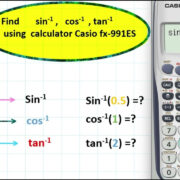Chemical reactions are akin to culinary recipes, with precise ingredients (reactants) that need to be combined in just the right proportions to produce a perfect dish (product). However, when it comes to chemical equations, maintaining that balance is not about taste but the fundamental law of conservation of mass. The atoms that enter a reaction must equal the atoms that exit. Achieving this can be complex, certainly not as simple as measuring cups and spoons. But fret not—modern calculators and online tools can simplify the process considerably, ensuring that anyone can balance chemical equations like a pro.

Online Chemical Equation Balancer
When tackling chemical equations, an online balancing tool is a user-friendly option. These tools use algorithms to automatically balance equations for you.
Detailed Introduction:
Online chemical equation balancers are a great start for beginners and students. They provide a simple interface where you can enter the unbalanced equation and, with a click, get the balanced version. These tools can handle a variety of chemical equations, from simple to complex.
Detailed Steps:
- Locate a reputable online chemical equation balancer using a search engine.
- Input the unbalanced chemical equation into the provided field.
- Press the ‘Balance’ button or its equivalent.
- Review the balanced equation provided by the tool.
- If needed, practice by balancing the equation manually using the tool’s result as a guide.
Summary:
Using an online balancer simplifies learning and allows you to check your work quickly. It’s efficient for complex equations, which may be daunting to balance manually. However, relying solely on these tools without understanding the underlying concepts may limit your learning.
Traditional Paper and Pencil
Before technology, balancing chemical equations was done manually, which can still be a solid method for understanding equations at a fundamental level.
Detailed Introduction:
Balancing chemical equations by hand can provide deeper insight into the chemical reactions and the stoichiometry involved. It involves counting the atoms of each element and using this information to equalize them on both sides of the equation.
Detailed Steps:
- Write down the unbalanced equation.
- List the number of atoms of each element on both sides.
- Use coefficients to multiply the number of molecules, thus adjusting the number of atoms until each element is balanced.
- Recheck your counts to ensure both sides are balanced.
- Repeat the process if necessary until the equation is properly balanced.
Summary:
Mastering manual balancing fosters a strong foundation in chemistry. It may be time-consuming, and errors can occur, but the educational value is unmatched. This method enhances problem-solving skills, which calculators cannot provide.
Spreadsheet Software
Applications like Microsoft Excel can be used to balance chemical equations with a bit of setup.
Detailed Introduction:
Spreadsheets can offer a calculated approach to balancing equations. This method utilizes the software’s capability to solve linear equations, a fundamental part of balancing chemical reactions.
Detailed Steps:
- Open your spreadsheet software and set up a matrix with your reactants and products.
- Insert formulas to represent the conservation of each element.
- Use the solver function to find the right coefficients that balance the equation.
- Validate the balanced equation by ensuring all formulas return a true balance.
Summary:
Spreadsheet solutions can be remarkably effective and cater to those who are comfortable with digital tools. The downside is the initial setup time and the required familiarity with the software’s more sophisticated features.
Chemistry Textbooks
Good old chemistry textbooks often include sections on balancing equations using tried-and-true methods.
Detailed Introduction:
A chemistry textbook is a well-structured resource that can guide you step by step. These texts typically offer explanations, examples, and practice problems with solutions.
Detailed Steps:
- Review the section on balancing chemical equations.
- Look at worked examples to understand the process.
- Tackle practice problems provided in the book.
- Check your answers with the solutions given to verify your understanding.
Summary:
Textbooks provide comprehensive learning material and are excellent for self-study. However, they can be less interactive compared to digital tools and might not reflect the most current pedagogical approaches.
Educational Apps
Educational apps offer interactive experiences for learning and practicing chemical equation balancing.
Detailed Introduction:
Smartphones and tablets are ubiquitous, and educational apps take advantage of this by offering a highly accessible way to learn chemistry. These apps often include gamified learning, instant feedback, and the ability to track progress.
Detailed Steps:
- Download a reputable educational app focused on chemistry.
- Go through tutorials or guides within the app to understand its functions.
- Start with simple equations to practice balancing on the app.
- Gradually move to more complex reactions as your skills improve.
- Utilize any quizzes or tests within the app to assess your understanding.
Summary:
Educational apps are engaging and convenient for learners on the go. However, they may have less depth compared to other resources and can distract if used without discipline.
Interactive Websites
Dive into the plethora of interactive educational websites that offer tools and tutorials for chemistry students.
Detailed Introduction:
Interactive websites provide a wealth of resources, including tutorials, animations, and exercises for balancing chemical equations. They can be particularly helpful for visual learners who benefit from seeing the atoms and molecules in action.
Detailed Steps:
- Find a reputable educational website with chemistry resources.
- Explore tutorials and interactive guides available on the site.
- Practice balancing equations using the site’s tools or games.
- Take advantage of the visual aids to gain a better understanding of the process.
- Use the website’s exercises and tests to evaluate your progress.
Summary:
Interactive websites can make learning fun and they are generally accessible from any device with internet access. Their main drawback could be the overwhelming amount of information and the potential for distraction if not used with a specific learning focus.
Peer Study Groups
Joining a study group can be an excellent way to learn chemical equation balancing through collaboration and discussion.
Detailed Introduction:
Study groups provide a supportive environment to explore chemical equations. Sharing different techniques and problem-solving methods can enhance everyone’s understanding and retention.
Detailed Steps:
- Form or join a study group with classmates or online peers.
- Assign different chemical equations to balance as a group activity.
- Discuss various methods and compare results.
- Encourage members to explain their thought processes.
- Regularly meet to tackle increasingly difficult chemical equations.
Summary:
Peer study groups capitalize on collective knowledge and provide motivation. The downside can be scheduling conflicts and the potential for unequal participation levels among group members.
Conceptual Learning Videos
Educational videos can visually explain the process of balancing chemical equations in a digestible format.
Detailed Introduction:
YouTube and other platforms host countless educational channels that provide in-depth explanations and visual animations to break down complex topics such as balancing chemical equations.
Detailed Steps:
- Search for highly-rated educational videos on balancing chemical equations.
- Watch these videos carefully, taking notes if needed.
- Pause and replay sections that are difficult to understand.
- Practice balancing equations as suggested in the videos.
- Look for videos that offer advanced techniques once basics are mastered.
Summary:
Videos are a great way to learn through seeing and listening, which can be particularly beneficial for auditory and visual learners. However, this passive form of learning should be complemented with active practice to solidify the concepts discussed.
Practice Worksheets
Printable worksheets can be a valuable tool to methodically practice the balancing of chemical equations.
Detailed Introduction:
Worksheets offer a structured approach to practice, with a range of difficulty levels that users can progress through as their skills improve.
Detailed Steps:
- Locate and print out worksheets from educational resources or textbooks.
- Attempt to balance each equation without assistance to test your current understanding.
- Check your work against the answers, often provided on the last page or online.
- Gradually increase the difficulty level as you master each stage.
Summary:
Worksheets are a focused way to practice without distraction. They don’t offer interactive help during the balancing process, but they do provide a clear measure of one’s progression.
Flashcards
Flashcards can assist in memorizing common compounds and their balanced forms, setting a solid foundation for more complex balancing.
Detailed Introduction:
Memorization plays a part in learning to balance chemical equations. Recognizing familiar patterns and compounds can speed up the process.
Detailed Steps:
- Create or obtain flashcards with common reactants and their balanced equations.
- Spend regular intervals studying and memorizing these cards.
- Test yourself or have someone test you on the content of the flashcards.
- Over time, add more complex equations to your flashcard set.
- Use the mastered flashcards as building blocks when confronting new, complex equations.
Summary:
Flashcards are a time-tested method for reinforcing memory and can be a quick way to test knowledge. However, this method can promote rote learning over conceptual understanding, and it’s important to still practice actual balancing, not just memorization.
Conclusion
Chemical equations are the language through which we understand chemical reactions, and balancing them is crucial for anyone interested in chemistry. Although initially intimidating, the process can be made simpler with the right resources and methods. From high-tech online balancers and educational apps to the more traditional paper-and-pencil approach, there’s a strategy to suit each learning style. Combining these methods often yields the best results, allowing for a thorough understanding and proficient skill set.
FAQs
-
What are the basic rules for balancing chemical equations?
The basic rule is that the number of atoms of each element must be the same on both sides of the equation. Start by balancing atoms of elements that only appear once on each side, and leave hydrogen and oxygen for last as they often appear in multiple compounds. -
Why is it important to balance chemical equations?
Chemical equations must be balanced to obey the Law of Conservation of Mass, which states that in a closed system, matter is neither created nor destroyed. Balancing ensures that the quantities of reactants and products in a chemical reaction are accounted for. -
Can all chemical equations be balanced?
Yes, in principle, all chemical reactions have balanced equations, because they reflect the actual stoichiometry of the reaction that occurs in nature. If an equation seems unbalanceable, it’s likely an incorrect representation of the reaction.









